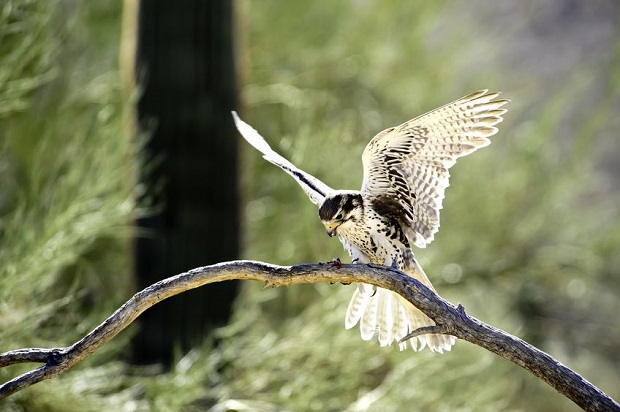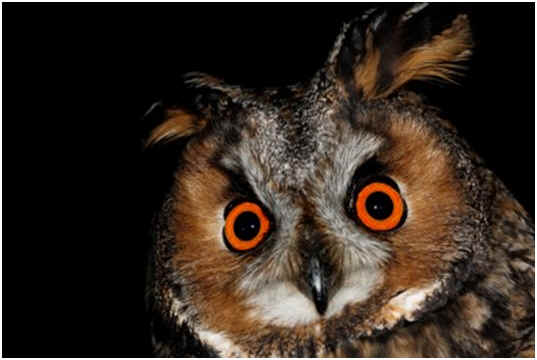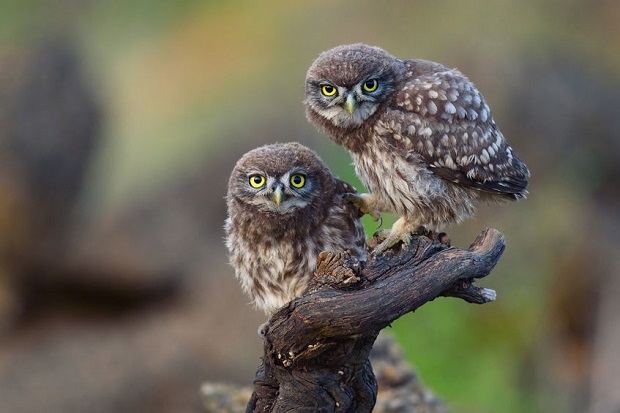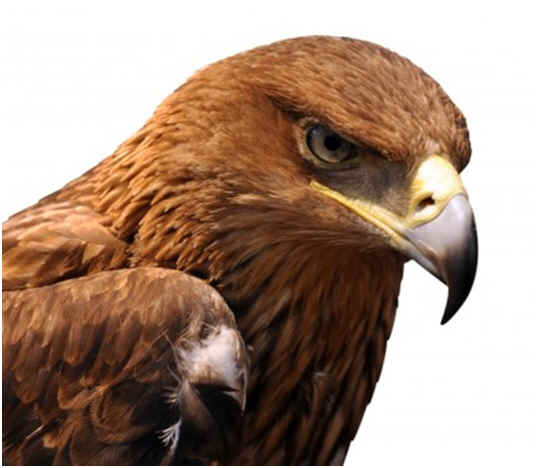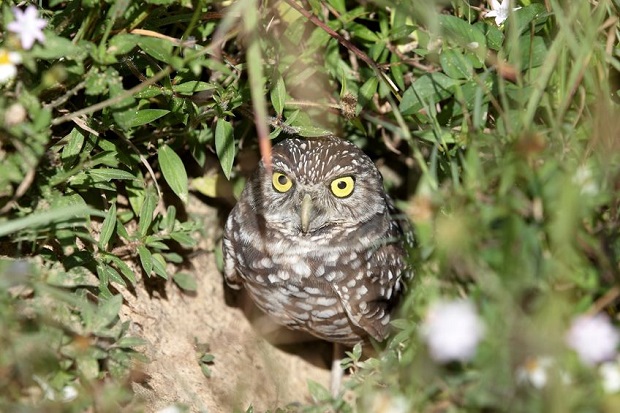
Discover answers to the most popular questions about burrowing owls, including classification, identification, habitat and range, hunting and diet, behavior, and conservation status.
Classification
How Are Burrowing Owls Classified?
Phylum: Chordata
Subphylum: Vertebrata
Class: Aves
Order: Strigiformes
Family: Strigidae
Genus: Athene
Species: Athene cunicalaria
Identification
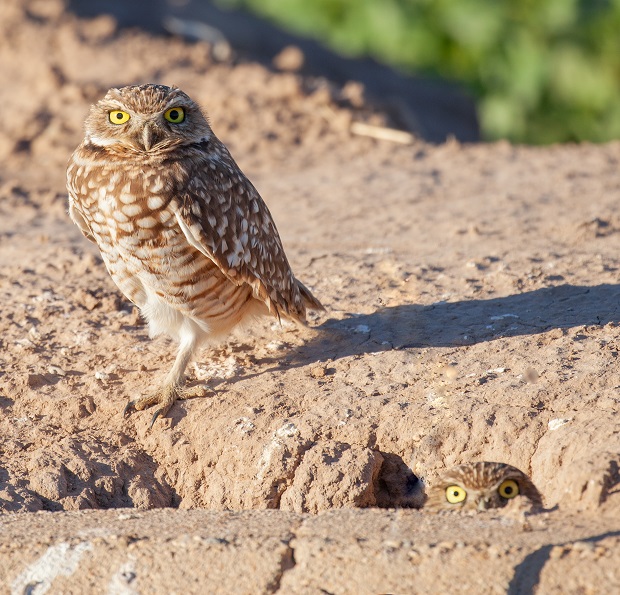
What Does a Burrowing Owl Look Like?
Its mottled grayish-brown feathering is the perfect camouflage for its environment among the trees.
Its facial disk is outlined with rings of color working inward toward the eyes.
The coloring of the burrowing owl is a tawny brown on the backside, speckled in white. The underside is soft beige except for the white throat. White feathers rounding out the upper part of the facial disk appear to be eyebrows. The colors vary between sexes and age groups.
The most notable feature of this species is the long, lanky legs that are tightly feathered all the way to the feet.
How Big Is a Burrowing Owl?
The burrowing owl is one of the smallest owl species standing at 8 ½-11 inches long and weighing 5-7 ounces. (The only smaller owls are the Pygmy Owl or Elf Owl). Its two-foot wingspan is TINY when compared to a larger owl species like the Snowy Owl, which has a wingspan of almost five feet. [Berger]
Unlike other owl species, the male burrowing owl weighs slightly more than the female and has a longer wingspan. [USFWS]
Habitat and Range
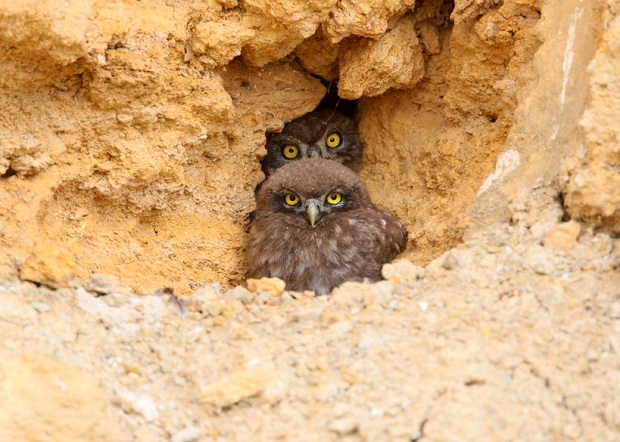
Are Burrowing Owls Only Found in the United States?
Burrowing owls are widely distributed throughout the United States, but their range extends from the east coast to the western Canadian provinces.
Though the burrowing owl is prolific on the plains of the Midwest, it can be found outside of the United States. The owl’s range is from the Pacific coast of North America, expanding east to Minnesota and Louisiana. It can be found as far north as British Columbia and Manitoba and as far south as Tierra del Fuego. It can also be found in parts of Florida and a few Caribbean islands during the breeding season. [Burton]
Where Do Burrowing Owls Nest?
Burrowing owls nest in hollow burrows in the ground, hence the name. They can dig a burrow by standing on one foot and scratching the surface with the other (dirt in pellets suggests they may use their bills to excavate as well), but they often prefer to inhabit the abandoned dwellings of other burrowing animals such as prairie dogs. They will then personalize the burrow, elongating it if necessary and then lining the nesting chamber with grass, feathers, and weeds. These tunnels are often five feet long and will turn a corner along the length to conceal the nesting chamber at the end of the tunnel. [Ryser][Burton]
Burrowing owls are more colonized than many other owl species nesting within loose colonies about 100 yards apart. [DOW]
Hunting and Diet
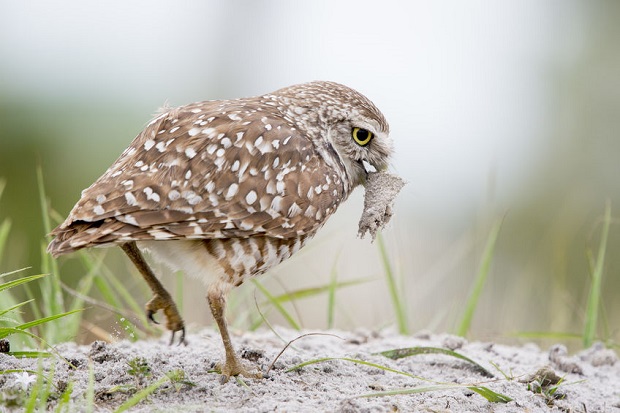
What Do Burrowing Owls Eat?
But large insects make up a good portion of their diet. They are particularly fond of large beetles and locusts and are known to feed on scorpions as well. [Burton]
Owls do not digest food in the same manner that we do. They swallow their food whole, and the parts that cannot be digested, the bones, teeth, fur, etc., are compacted into pellets and coughed up.
How Do Burrowing Owls Catch Their Prey?
The burrowing owl has several different hunting strategies depending on the prey. They sometimes take flight and hover over an area, searching for suitable prey. They also still-hunt perched in an elevated position waiting to locate prey or simply to grab an insect as it flies within range. It can also use its long, lanky legs to scurry after its prey. It has a shorter tail than many other owl species to accommodate ground hunting. [Ryser]
Do Burrowing Owls Have Predators?
Being primarily ground-bound leaves this tiny owl in danger from many predators, including horned owls, foxes, badgers, hawks, and even domestic pets. [DOW]
The burrowing owl has a few interesting survival instincts. For example, it lines its burrow with cow or horse manure, which is believed to mask the smell of the owl from predators. It has been noted that the removal of the manure at the entrance to the burrow will result in its immediate replacement within a day. [Ryser] It can also mimic the rattle of the prairie rattlesnake when threatened. [Scholz]
Behavior
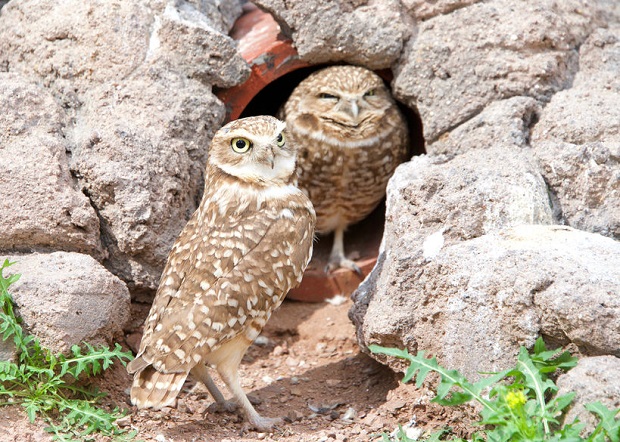
Are Burrowing Owls Nocturnal?
Burrowing owls are primarily diurnal. They socialize and hunt during the day. In fact, of all of the owl species, this group is most often sighted due to its daytime behaviors. But that doesn’t mean that these cute creatures sleep at night. Their calls can be heard throughout the evening, especially during mating season. [Scholz]
These owls may prefer to hunt during the day because their eyesight is not as keen compared with other owl species. In an experiment on the keenness of owl sight, the barn owl could locate a mouse at 2,000 feet with the light of only one candle. On the other hand, the burrowing owl found it difficult to find prey even when additional light sources were added. [Burton]
Do Burrowing Owls Migrate?
Burrowing owls are non-migratory. They will live in one area for their entire lives. Some movement may occur if the environment ceases to provide adequate prey.
Though not all burrowing owls migrate, it is generally accepted that they are a migratory species in the northern part of their range. Several observational studies have hypothesized that the disappearance of some of the owls during colder seasons may result from the bird caching food and settling into its burrow. [Ryser]
Conservation Status
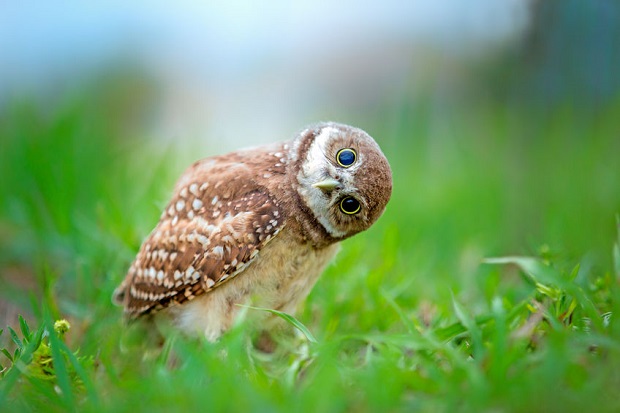
Are Burrowing Owls Endangered?
As of December 2013, burrowing owls in the United States are currently not protected by the Endangered Species Act of 1973 (ESA). The US Fish and Wildlife Service regulates the ESA with cooperation from the National Marines Fisheries Service. [USFWS]
They are listed as ‘endangered’ in Canada and ‘threatened’ in Mexico. The US Fish and Wildlife Service considers them a ‘bird of conservation concern’ at the national level. At the state level, burrowing owls are listed as ‘endangered’ in Minnesota, ‘threatened’ in Colorado, and as a ‘species of concern’ in California, Montana, Oklahoma, Oregon, Utah, Washington, and Wyoming. [USFWS]
Resources
- Jackson, Laura Spess, Carol A. Thompson, and James J. Dinsmore. The Iowa Breeding Bird Atlas, Iowa City: University of Iowa Press, 1996. Print.
- Allen, Arthur W. US Fish and Wildlife Service – “Habit Suitability Index Models: Burrowing Owl”
- Scholz, Floyd, and Tad Merrick. Owls, Mechanicsburg, PA: Stackpole Books, 2001. Print.
- Burton, Maurice, and Robert Burton. International Wildlife Encyclopedia. 3rd ed. New York: Marshall Cavendish, 2002. Print.
- Ryser, Fred A., and Jennifer Dewey. Birds of the Great Basin: a natural history. Reno: University of Nevada Press, 1985. Print.
- US Fish and Wildlife Service – “Protecting Burrowing Owls at Construction Sites”
- Defenders of Wildlife – “Fact Sheet-Burrowing Owls”
- US Fish and Wildlife Service – “Status Assessment and Conservation Plan for the Western Burrowing Owl in the United States”
- National Audubon Society – “Audubon’s WatchList 2007 in taxonomic order by geographic region”
- US Fish and Wildlife Service – “Listing of Species as Threatened or Endangered”

